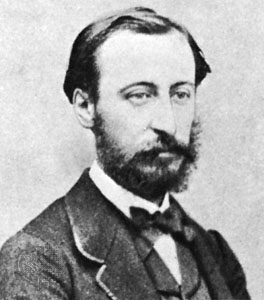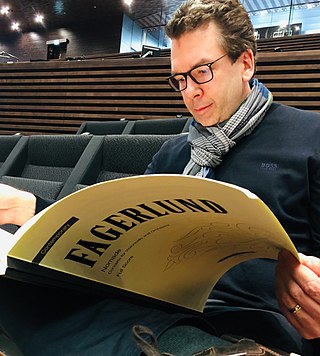Related Research Articles

Esa-Pekka Salonen is a Finnish conductor and composer. He is the music director of the San Francisco Symphony and conductor laureate of the Los Angeles Philharmonic, Philharmonia Orchestra in London and the Swedish Radio Symphony Orchestra. In 2024, he announced his resignation from the San Francisco Symphony upon the expiration of his contract in 2025.

Paavo Allan Engelbert Berglund was a Finnish conductor and violinist.
The Piano Concerto No. 5 in F major, Op. 103, popularly known as The Egyptian, was Camille Saint-Saëns' last piano concerto. He wrote it in 1896, 20 years after his Fourth Piano Concerto, to play himself at his own Jubilee Concert on May 6 of that year. This concert celebrated the fiftieth anniversary of his début at the Salle Pleyel in 1846.

The Piano Concerto No. 4 in C minor, Op. 44 was composed by Camille Saint-Saëns in 1875. It was premièred on October 31, 1875, at the Théâtre du Châtelet of Paris, with the composer as the soloist. The concerto is dedicated to Anton Door, a professor of piano at the Vienna Conservatory.
Camille Saint-Saëns composed his Cello Concerto No. 1 in A minor, Op. 33, in 1872, when he was 37 years old. He wrote this work for the French cellist, viola da gamba player and instrument maker Auguste Tolbecque. Tolbecque was part of a distinguished family of musicians closely associated with the Société des Concerts du Conservatoire, France's leading concert society. The concerto was first performed on January 19, 1873, at the Paris Conservatoire concert with Tolbecque as soloist. This was considered a mark of Saint-Saëns' growing acceptance by the French musical establishment.

The Violin Concerto No. 3 in B minor, Op. 61, by Camille Saint-Saëns is a piece for violin and orchestra written in March 1880. Saint-Saëns dedicated the concerto to fellow composer-virtuoso Pablo de Sarasate, who performed the solo part at the premiere in October 1880 in Hamburg.
The Bergen Philharmonic Orchestra is a Norwegian orchestra based in Bergen. Its principal concert venue is the Grieg Hall.

Pekka Kuusisto is a Finnish musician.

Nicolas Bacri is a French composer. His written works include seven symphonies, eleven string quartets, eight cantatas, two one-act operas, three piano sonatas, two cello and piano sonatas, four violin and piano sonatas, seven piano trios, four violin concertos and numerous other concertante works.
Saint-Saëns' Cello Concerto No. 2 in D minor, Op. 119, is written in two movements, like his Fourth Piano Concerto. It was composed in 1902 and is dedicated to the Dutch cellist, Joseph Hollman, who gave the first performance on February 5, 1905 in Paris. The Second Concerto is much more virtuosic than the First, but does not possess the thematic inventiveness and harmonic intricacy of the First.
Gordan Nikolitch, also spelled Gordan Nikolić, is a Franco-Serbian violinist. He was the first concertmaster of the London Symphony Orchestra for nearly 20 years, having stepped down in October 2017 to concentrate on directing and teaching.
Olli Mustonen is a Finnish pianist, conductor, and composer.
The Piano Concerto No. 3 in E-flat major, Op. 29 by Camille Saint-Saëns, was composed in 1869. The concerto is written in 3 movements. When the concerto was first performed by Saint-Saëns himself at the Leipzig Gewandhaus on 27 November 1869 it was not well received, possibly because of its harmonic experimentation. It is not as often performed as his famous second concerto or the fourth or fifth concertos, but it is still an important addition to the piano concerto repertoire. It was dedicated to Élie-Miriam Delaborde, a pianist who is believed to have been the natural son of Charles-Valentin Alkan.

Jean-Jacques Kantorow is a French violinist and conductor.
The Concerto per Trombone e Orchestra in C was composed by Italian composer Nino Rota in 1966. The concerto is in three movements:
- Allegro giusto
- Lento, ben ritmato
- Allegro moderato

Sebastian Fagerlund is a Finnish composer. He is described as “a post-modern impressionist whose sound landscapes can be heard as ecstatic nature images which, however, are always inner images, landscapes of the mind”. Echoes of Western culture, Asian musical traditions, and heavy metal have all been detected in his music.
Santtu-Matias Rouvali is a Finnish conductor and percussionist. He is chief conductor of the Gothenburg Symphony Orchestra, and principal conductor of the Philharmonia Orchestra.

Geneviève Laurenceau is a French classical violinist. She was a supersoloist with the Orchestre national du Capitole de Toulouse from 2007 to 2017.

Alexandre Kantorow is a French pianist. Described by Gramophone as a "fire-breathing virtuoso with a poetic charm" and by Fanfare as "Liszt reincarnated", he won the first prize, gold medal and Grand Prix at the 16th International Tchaikovsky Competition in 2019. With this win, Kantorow became the first French winner in the history of the competition.

The Symphonie enfantine is a three-movement composition for chamber orchestra by the Finnish composer Uuno Klami, who wrote the piece in 1928. Toivo Haapanen and the Helsinki Philharmonic Orchestra premiered the work at the University of Helsinki on 14 December 1931, during Klami's "highly-acclaimed" second composition concert. Symphonic in name rather than in technique, the Symphonie enfantine is the first of Klami's three symphonies and the only of the series to not receive a number: the First Symphony arrived subsequently in 1938 and the Second Symphony (Op. 35) in 1945.
References
- ↑ "Tapiola Hall". Espoo.fi. Retrieved 19 December 2017.
- ↑ "Orchestra". Tapiolasinfonietta.fi. Retrieved 19 December 2017.
- ↑ "Recordings". Tapiolasinfonietta.fi. Retrieved 19 December 2017.